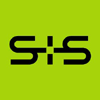RecyPET was established in 1998 and has operated Europe’s first bottle-to-bottle PET recycling plant in Fraunfeld, Switzerland, since September 2000. The PET recycling plant operates in accordance with the URRC technology developed by the United Resource Recovery Corporation (USA) together with Coca-Cola, and has an input capacity of approximately 18,000t per year. Four further plants in Europe now use this technology.
In Switzerland the collected beverage bottles are sorted in five sorting plants according to colour and quality, compressed into balls and delivered to RecyPET, among others, for processing. RecyPET’s goal is to close the material cycle for PET beverage bottles. The recyclate produced is used, among other things, for the production of new PET beverage bottles, food packing films, other films, etc.
S+S Separation and Sorting Technology supplied a metal separator of the type PETMAG to RecyPET as long ago as 2001. The PETMAG separates metal contaminants of all kinds from PET flakes. Since the flakes are also to be sorted according to colour, S+S, in close cooperation with RecyPET, adapted a colour sorting machine originally used in the glass recycling industry to the requirements of PET recycling. The result was the SPECTRUM colour separator. By means of double-sided inspection it was possible even to separate flakes contaminated with the slightest glue residues.
In 2010 the PETMAG metal separator, which during its ten years of operation caused service and spare part costs of barely €2,000, was replaced by a combined system of the latest generation, the VARISORT COMPACT. Colour and metal sensors are combined with one another in this device.
The material to be examined is fed by means of specially adapted vibrating trough conveyors and unites the advantages of chutes and belt systems. This also makes it possible for the first time to remove rubber pieces from the material stream that are difficult to separate using chute technology due to varying friction. The superiority of VARISORT COMPACT over chute systems with channels lies in the fact that the equipment is easy to clean and blockages due to larger flakes can virtually be ruled out. Even in the case of irregular parts or materials with different coefficients of friction, the belt feeding system provides for pinpoint ejection in free fall at the end of the belt, after the material has been classified with the sensors. After evaluation of the relevant information, high-speed valves for the material discharge are activated with an appropriate time delay. By means of powerful compressed air pulses, the particles to be separated are diverted from their original drop parabola into a separate shaft.
In comparison with conventional belt sorting systems, the VARISORT COMPACT sorting system is characterised by a compact design requiring little space. Retrofitting in existing plants and the adoption of already-existing chute devices is easily possible. The use of high-resolution sensors and state-of-the-art signal processing technologies allows high detection accuracy and the analysis of up to 500,000 parts per second. By means of the free-fall inspection, a very precise blow-out procedure can be realised even with high rejection rates. This is made possible by the large number of high-speed valves, which can perform up to 500 switching cycles per second.
For Kornel Büsser, production manager at the Swiss company RecyPET, the long-standing cooperation with S+S has proven its value: “The reliability and ease of maintenance of the S+S units convinced us, together with their performance, particularly in the separation of difficult contaminants.”










